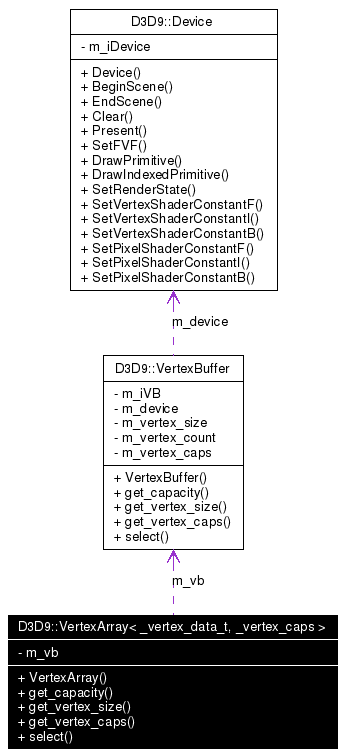
#include <dx9_wrap.h>
Collaboration diagram for D3D9::VertexArray< _vertex_data_t, _vertex_caps >:

Public Member Functions | |
| VertexArray (Device &n_device, int vertex_count) | |
| Create D3D9::VertexArray instance. | |
| int | get_capacity () const |
| Return capacity of the array (count of elements it can hold). | |
| int | get_vertex_size () const |
| Retrieve size (in bytes) of single vertex instance stored in the array. | |
| int | get_vertex_caps () const |
| Retrieve vertex "caps" flags. | |
| void | select (int stream_index=0) |
| Select this VertexArray as active for device input stream "stream_index" on attached render device. | |
|
||||||||||||||||
|
Create D3D9::VertexArray instance. Type of individual elements is fixed at runtime, so you only need to specify count of vertices to allocate the memory for. |
|
|||||||||
|
Return capacity of the array (count of elements it can hold).
|
|
|||||||||
|
Retrieve size (in bytes) of single vertex instance stored in the array.
|
|
|||||||||
|
Retrieve vertex "caps" flags. This is usually 0, but can be value of legacy "FVF" bit mask (see Direct3D v9 documentation).
|
|
||||||||||
|
Select this VertexArray as active for device input stream "stream_index" on attached render device. Default stream index (when not specified) is 0. |
 1.3.6
1.3.6